

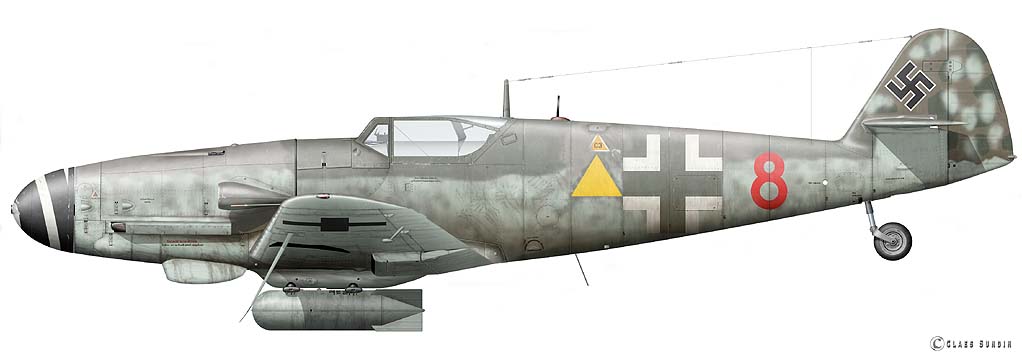
|
Red 8 of 2./EJG 2, Schleswig-Jagel/Germany, 4 May 1945 Ofhr. Othmar Schwendmayer, a former He 111 pilot on the Eastern Front, flew this machine against British, American, and Russian forces over the last three weeks of the war. Schwendmayer flew his last mission of the war on this day, attacking enemy columns on the Hamburg-Lübeck autobahn. The unit dropped their AB 250 Anti-personnel bombs that night from 1200 meters in altitude, to avoid most of the AA threat. Virtually all his operations were flown at night and he believed they were largely ineffective. |
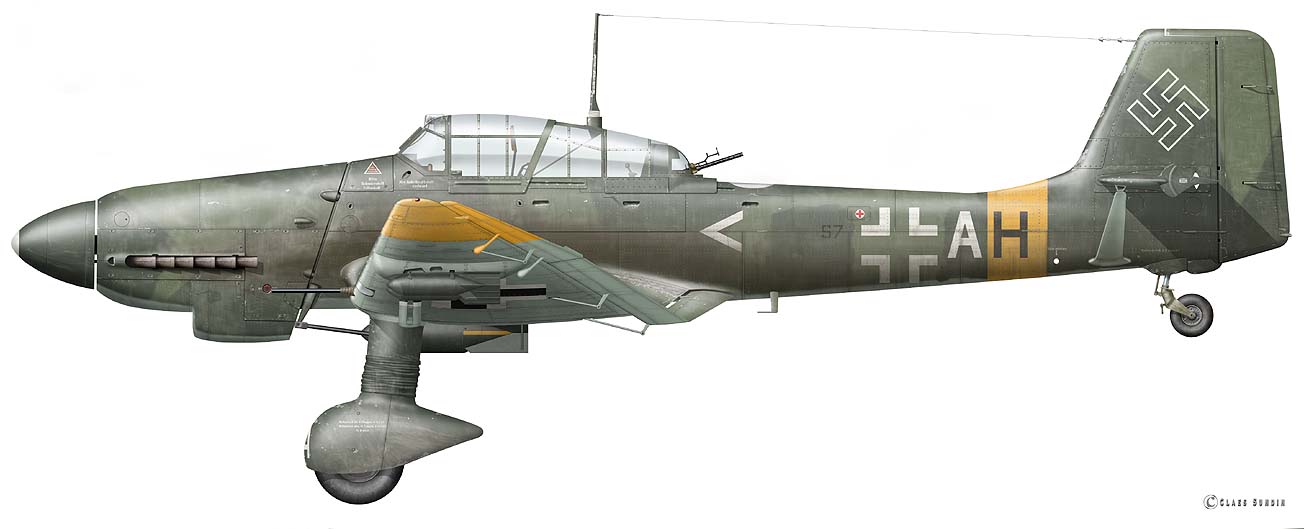
|
S7+AH "White Chevron" of 1./S.G. 3, Immola/Finland, 2 July 1944 This aircraft was flown by Staffelkapitän, Oblt. Hans Törfer. While stationed in Finland, I./S.G. 3 flew 1200 sorties and dropped 540 tons of bombs in support of their Finnish allies. The Gruppe lost 15 Stukas during this deployment, with nine crewmembers MIA, four WIA, and one KIA. Note the upper windshield mounted Stuvi 5B bombsight in the cockpit. |

|
9K+FH of 1./KG 51, Brunnthal/Germany, May 1945 In mid-March 1945, this machine was delivered to 1./KG 51 at Giebelstadt where it was flown operationally until mid-April. On 24 April, I./KG 51 was disbanded and delivered 12-13 aircraft to JV 44 at München-Riem. Surprisingly, I./KG 51 re-constituted a few days later and all the aircraft were taken back to be flown to Prague. This un-serviceable aircraft was left behind. It was discovered several days later by American troops on the edge of the autobahn south of München. |

|
Yellow H of 6.(Schl.)/L.G. 2, Vitbesk/USSR, July 1941 Late in July, L.G. 2 participated in attacks on a Soviet counter-offensive against Panzergruppe 2 around Smolensk. During this month, the 6th Staffel lost four Bf 109 E fighter-bombers, with another five of them damaged. Only one pilot was lost however, being listed as MIA. |
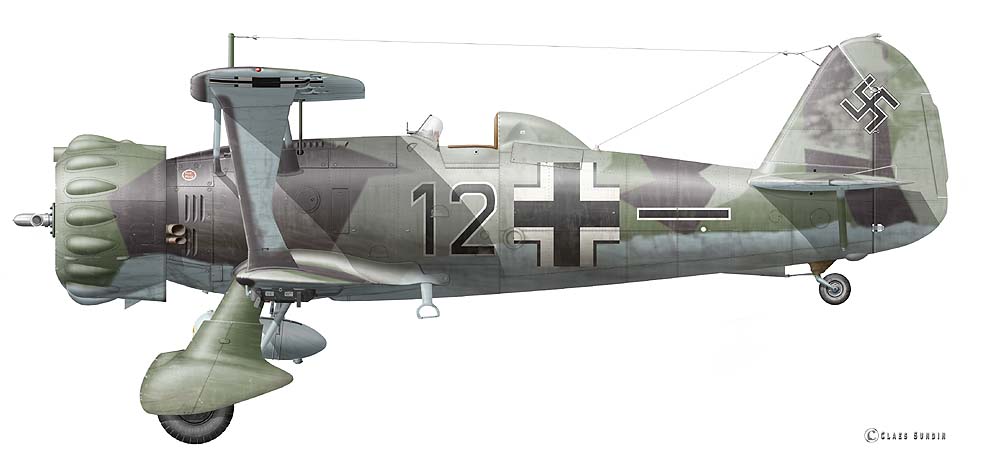
|
Black 12 of 5.(Schl)/L.G. 2, Cambrai/France, 21 May 1940 By moving to Cambrai, II.(Schlacht)/L.G. 2 was the most forward based unit of the whole Luftwaffe. The unit was constantly in action and conducted pinpoint attacks on pockets of French resistance until the very end of the campaign. Although the Hs 123 was by now regarded as obsolete by the Luftwaffe, the combat results achieved were really quite astonishing. Consequently, the plans for re-equipping the unit's outdated biplanes were shelved. The unit was later sent into action in the Balkans with a mix of Bf 109s and by now, the legendary Hs 123. Note the fighter-style markings adopted by this unit. |
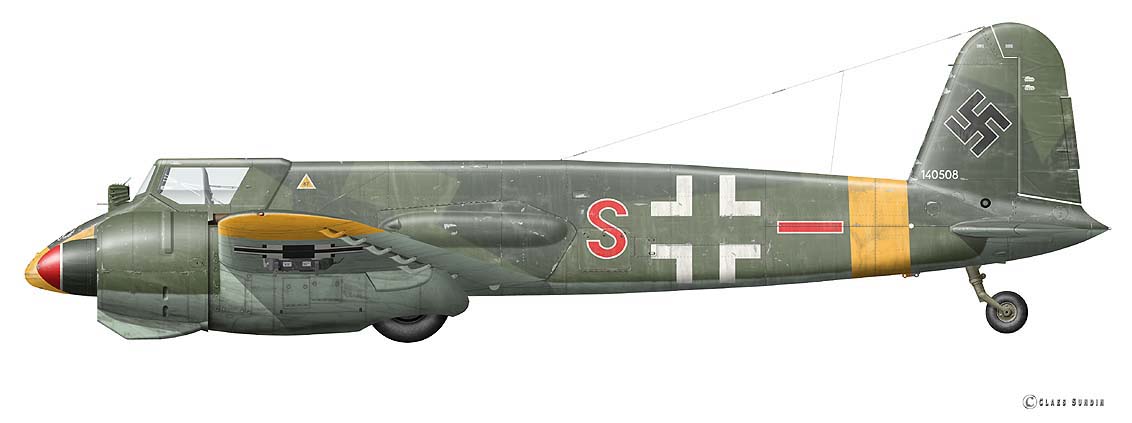
|
Red S of 8.(Pz)/Schl.G. 1, Orel-West/USSR, July 1943 On the first day of July, before being committed to the Battle of Kursk, 8.(Pz)/Schl.G. 1 reported 16 Hs 129 B-2s on strength. Trying to halt the following Soviet counter-offensive resulted in heavy losses. This machine was shot down on the 16th of July due to flak. It was one of six Hs 129s the unit lost during the two weeks of intense fighting over the latter half of the month. Note the two tank kill markings on the rudder. |
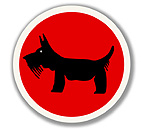
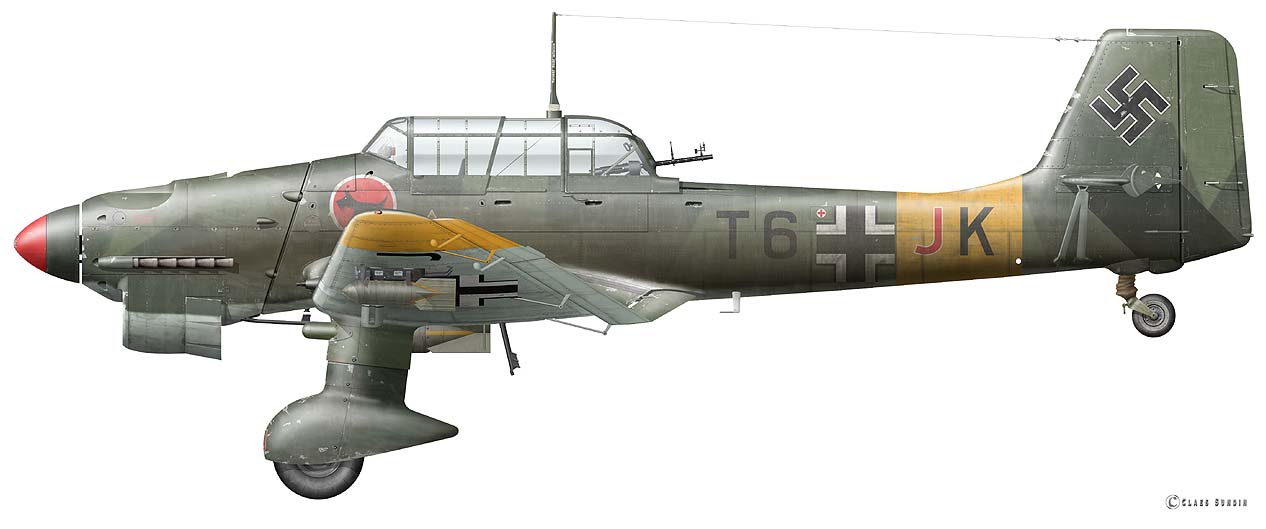
|
T6+JK of 2./St.G. 2, Ranhewa/USSR, 8 October 1941 On this day, this machine was hit by Flak in the rear cockpit resulting in 40% damage and the death of Bordfunker Fw. Walther Schriftman. The unit badge in front of the cockpit is the badge of the second Staffel, "the Scottish Terrier". |
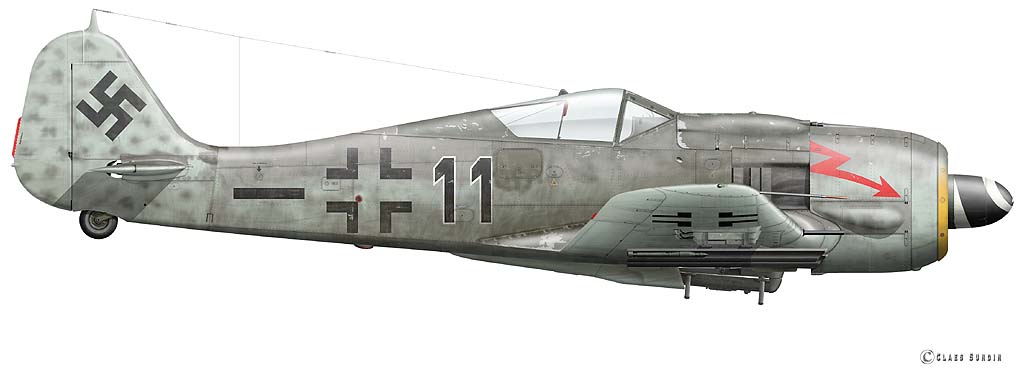
|
Black 11 of 5./S.G. 77, Cottbus/Germany, early March 1945 With some of the Fw 190s equipped with Panzerschreck rockets, elements of II./S.G. 77 attacked Soviets forces advancing towards Berlin as German ground forces try to hold the line along the Oder river. Notice that this machine has two sets of Panzerschreck rails under each wing. |
|
|
|
|
|
|